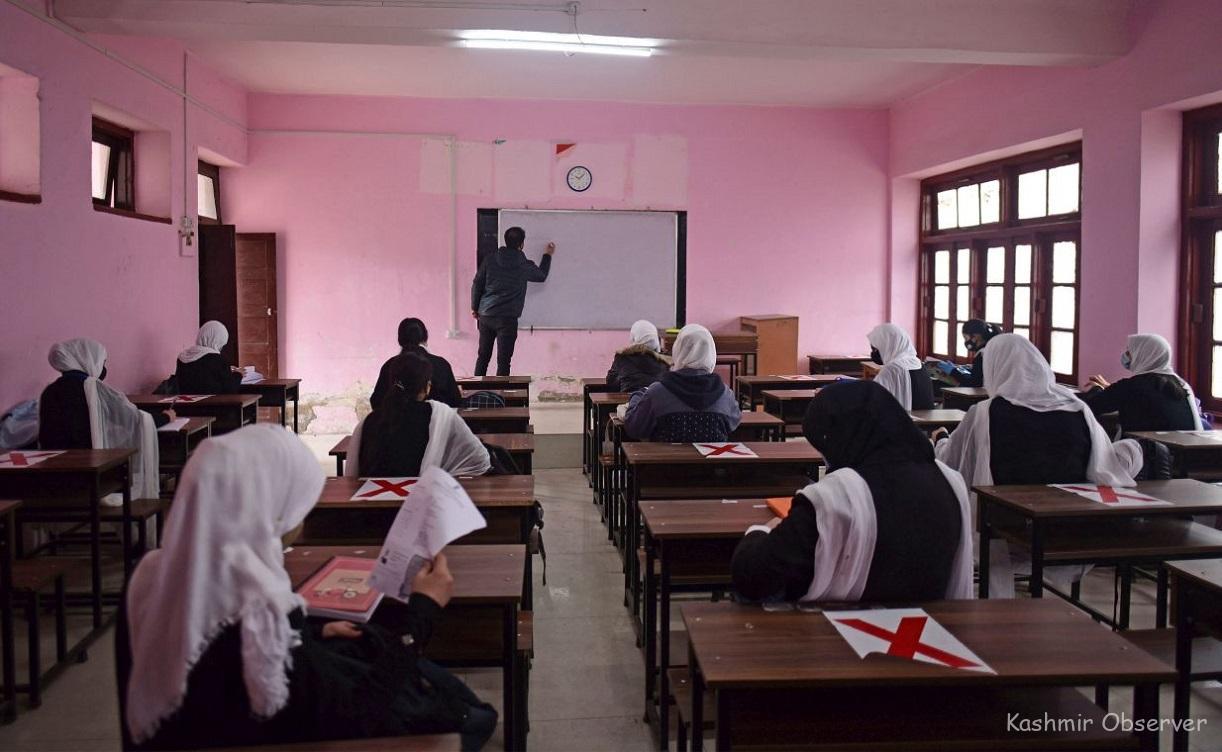(MENAFN- Kashmir Observer)

Representational Photo
Srinagar- The Department of School Education and Literacy (DoSE and L), Ministry of Education (MoE) on Monday released the Performance Grading Index for Districts (PGI-D) including Jammu & Kashmir for the 2018-19 and 2019-20 chapter.
PGI-D assesses the performance of the school education system at the district level by creating an index for comprehensive analysis. The latest PGI-D reports (2018-19 and 2019-20) provide insight into intra-State comparison of progress of School education.
Both the reports grade the districts into ten grades starting from Highest achievable Grade which is Daksh, meant for Districts scoring more than 90 percent of the total points in that category or overall. The lowest grade in PGI-D is called Akanshi-3 which is for scores upto 10 percent of the total points.
As per the report, no district in J&K and rest of India has attained highest grade Daksh in both 2019-20 and 2018-19, implying that there is ample scope for the districts to further improve their performance in future years.
However, as per the report, districts in J&K have been arranged in three categories of Prachesta—which is the 5th category of PGI-D grading system—1,2 & 3.
The report further noted that under Prachesta 1, J&K has four districts with Kulgam (324 overall score) leading the race of imparting a better education than the rest of Kashmir. Other districts include Ganderbal (314 overall score), Srinagar (313 overall score) and Baramulla (303 overall score).
Besides this, the report added, J&K has 12 districts falling under Prachesta 2. This includes Bandipora(298), Ramban(290), Pulwama(284), Jammu(283), Kupwara(281), Badgam(280), Shopian(2280), Anantnag(277), Kishtwar(259), Samba(253), Kathua (252) and Doda(242).
“J&K has four districts in Prachesta 4 including Rajouri(222), Udhampur(218), Reasi(195) and Poonch (194),” the report noted.
Pertinently, as per the Ministry of education, the ultimate objective of PGI-D is to help the districts to prioritize areas for intervention in school education and thus improve to reach the highest grade.
The PGI-D is expected to help the state education departments to identify gaps at the district level and improve their performance in a decentralised manner. The indicator-wise PGI score shows the areas where a district needs to improve. The PGI-D will also reflect the relative performance of all the districts in a uniform scale which encourages them to perform better.
The structure comprises total weightage of 600 points across 83 indicators, which are grouped under six categories which includes outcomes, effective classroom transaction, infrastructure facilities and student's entitlements, school safety and child protection, digital learning and governance process.
These categories are further divided into 12 domains — Learning Outcomes and Quality (LO), Access Outcomes (AO), Teacher Availability and Professional Development Outcomes (TAPDO), Learning Management (LM), Learning Enrichment Activities (LEA), Infrastructure, Facilities, Student Entitlements (IF and SE), School Safety and Child Protection (SS and CP), Digital Learning (DL), Funds convergence and utilization (FCV), Enhancing CRCs Performance (CRCP), Attendance Monitoring Systems (AMS) and School Leadership Development (SLD).
The PGI-D report has graded 725 districts in 2018-19 and 733 districts in 2019-20 across the States / UTs. In a press release, the Ministry has said that the“PGI-D 2020-21 is presently under compilation. PGI-D 2018-19 and 2019-20 provides insight into intra State comparison of progress of School education”.
In the Digital Learning (DL) category along with scores in 2018-19 and 2019-20, 20 districts have shown over 20 percent improvement in score and 43 districts have shown improvement of over 10 percent in score during 2019-20 as compared to 2018-19 resulting in grade level progress.
In the Infrastructure, Facilities, Student Entitlements (IF & SE) along with scores during 2018-19 and 2019-20 category, overall 478 districts made improvement in score during 2019-20 as compared to 2018-19. Out of these 478, 37 districts made over 20 percent improvement in score and 115 districts made an improvement of over 10 percent implying Grade level improvement.
Under the Effective Classroom Transactions during 2018-19 and 2019-20 category, Overall 510 districts made improvement in scores in the category- Effective Classroom Transactions, of which 18 districts made more than 20 percent improvement in scores and 29 districts improved their score by over 10 percent resulting in grade level improvement in 2019-20 as compared to 2018-19.
Follow this link to join our WhatsApp group : Join Now
MENAFN29062022000215011059ID1104454406
Legal Disclaimer:
MENAFN provides the information “as is” without warranty of any kind. We do not accept any responsibility or liability for the accuracy, content, images, videos, licenses, completeness, legality, or reliability of the information contained in this article. If you have any complaints or copyright issues related to this article, kindly contact the provider above.